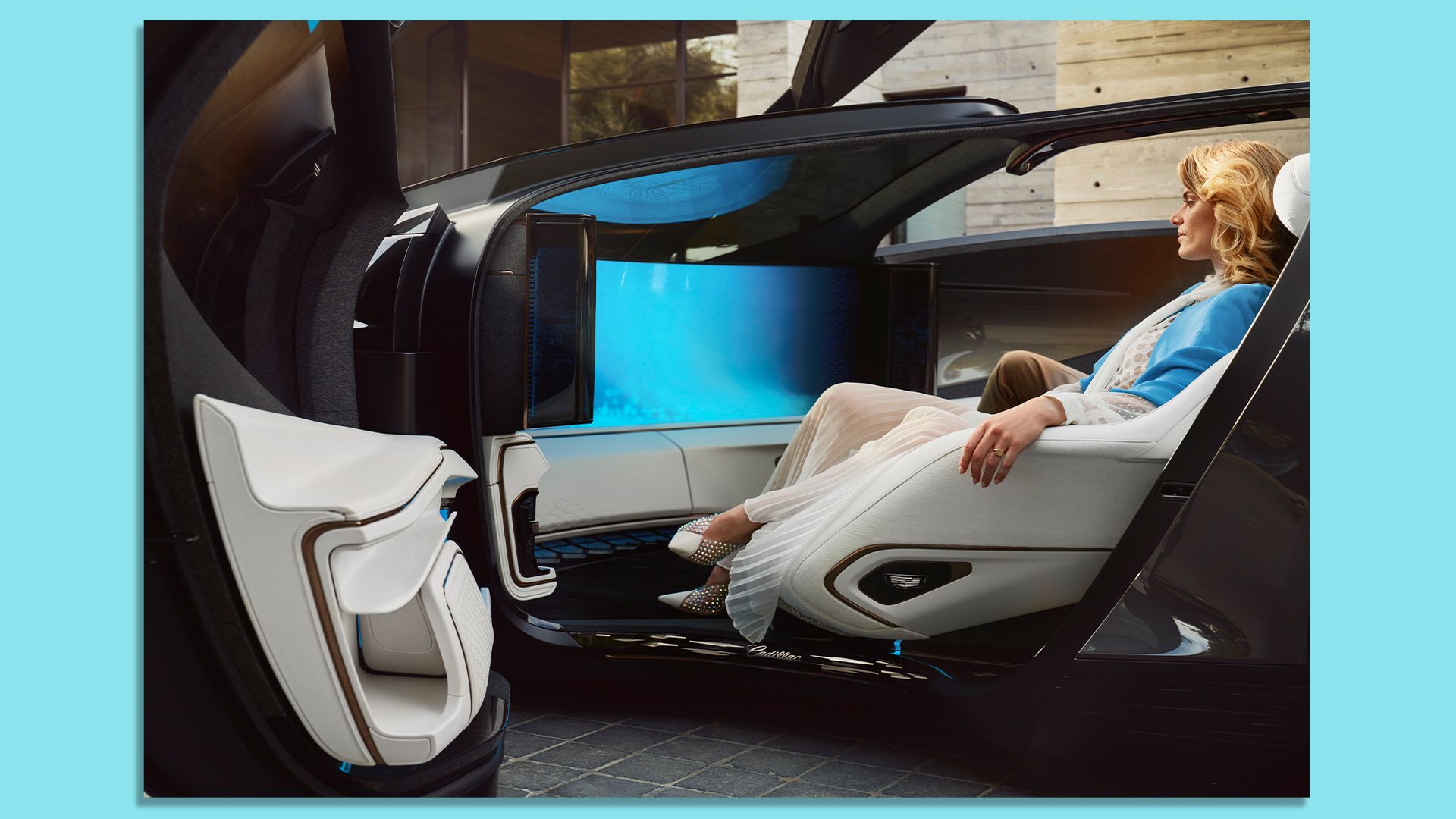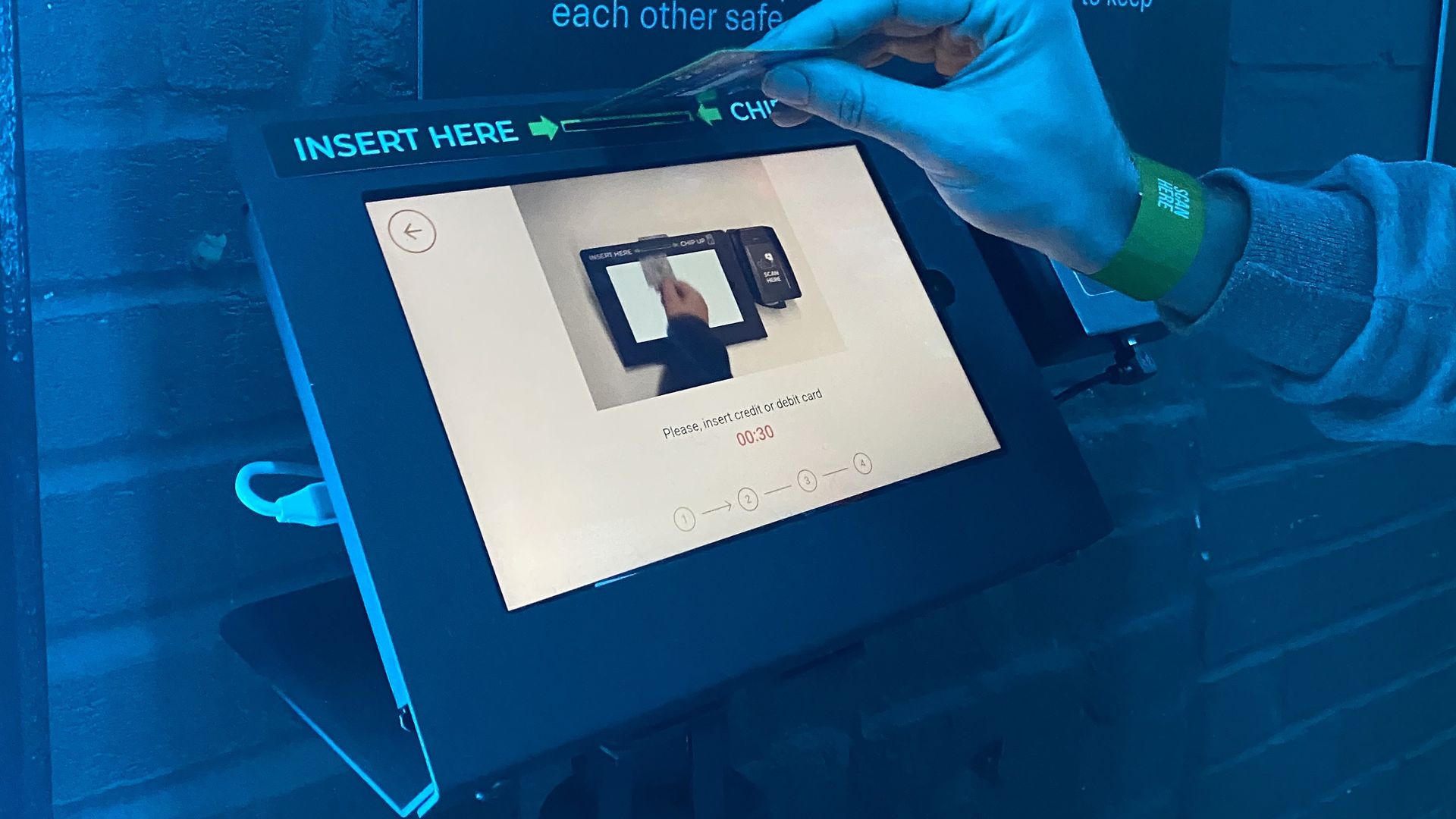| | | | | | | Presented By Deloitte | | | | Axios What's Next | | By Jennifer A. Kingson, Joann Muller and Erica Pandey ·Feb 22, 2022 | | Good morning! We hope you had a restful holiday weekend! - First up today: Erica Pandey digs into how return-to-office mandates could leave women and workers of color behind.
- See something cool or interesting that speaks to the way we'll live, work, play and get around in the days ahead? Take a picture for our reader photo slot. Email us at whatsnext@axios.com.
Today's Smart Brevity count: 1,148 words ... 4.5 minutes. | | | | | | 1 big thing: An unequal return to the office |  | | | Illustration: Sarah Grillo/Axios | | | | As companies reopen offices, who goes back and who stays home could determine the trajectory of workers' careers, Erica writes. The big picture: Women and people of color are generally happier working from home and are likelier than their white male colleagues to want to continue teleworking, according to a new Harris Poll survey of professional workers across the U.S. Why it matters: A hybrid workplace has the potential to become an inequitable workplace, as in-office workers have more contact with managers and executives — while those who stay home fall out of sight and out of mind. - "[Hybrid work] seems like a nice potential for flexibility, but what we've seen is that there is often an emphasis on face time, even if you're not necessarily more productive," says Gayle Kaufman, a professor of sociology at Davidson College.
By the numbers: - 52% of women say they enjoy working remotely and would like to do so in the long term, compared with 41% of men. Just 15% of women say working in person allows for more camaraderie among colleagues, compared with 25% of men.
- 52% of Black workers and 50% of women say working from home is better than working from the office when it comes to advancing in their careers, compared with 42% of men.
- 63% of Black workers and 58% of women say they feel more ambitious when working from home versus the office. Just 46% of men feel the same way.
- And when asked about their anxieties over returning to offices, 47% of women of color say they worry about having to dress for work, compared with 31% of men.
"I think what you're seeing from this data is that COVID, perhaps accidentally, has very much liberated workers, particularly women and BIPOC workers," says John Gerzema, CEO of the Harris Poll. What to watch: Omicron cases are falling rapidly, and more and more companies — like Microsoft, Expedia and American Express — are setting return-to-work dates. - Executives are nearly three times as likely to want to work in person as employees, and sociologists fear that hybrid workplaces will be two-tiered, with leadership and white male employees interacting at the office, while teleworking women and people of color are left behind.
Read the rest |     | | | | | | 2. Inside Cadillac's self-driving cocoon |  | | | Cadillac InnerSpace concept car. Photo: GM | | | | GM designers envision a future where luxury car passengers, unencumbered by driving, can relax and enjoy the journey with experiences tailored to enhance their well-being, Joann Muller writes. Why it matters: The first autonomous vehicles for personal use could arrive "as soon as mid-decade," according to General Motors — although some industry experts take issue with the claim. Whenever they arrive, self-driving cars promise to transform personal mobility. The big picture: GM designers have created a family of self-driving luxury concept vehicles to reflect their vision of mobility in 2030, including: - the PersonalSpace — a single-seat aircraft for skipping above congested cities;
- the SocialSpace — a roomy, six-passenger party van;
- the InnerSpace — a sleek, two-seater focused on personal luxury.
I got an up-close look at these models during a rare visit to GM's top-secret design dome in suburban Detroit last week. Details: The InnerSpace coupe features a dramatically raked roof with panoramic glass that lifts upward, as the doors open and the seats rotate outward, for easier entry and exit. - Instead of a steering wheel or traditional dashboard, the reclining love seat faces a huge wraparound LED screen, while biometric sensors trigger unique aromas, lights and sounds to enhance passengers' well-being.
Read the full story |     | | | | | | 3. At the Olympics, in virtual reality |  | | | Photo: Gabriel Bouys/AFP via Getty Images | | | | Our Axios colleague Ina Fried skipped the just-completed Winter Olympics in Beijing, but found a lot to like — and dislike — about watching the Games using NBC's new virtual reality app. Why it matters: VR has the potential to bring people both closer to the action and deeper behind the scenes. At the same time, it can be more isolating, tiring and blurry than watching a broadcast on a nice TV, Ina found. Details: She donned Meta's Quest 2 headset to watch the first period of the gold medal women's hockey game between the U.S. and Canada in VR, then tuned in to the regular TV broadcast for the rest of the game. - The app gives viewers a seat in a photo box right at center ice, with the option of a full 360-degree view of the stadium.
Pros: You've got a great seat, in between the two teams' benches, which makes you feel like you're there. Cons: It's less relaxing than watching TV because you have to stay on top of the action. Ina's bottom line: The VR experience appeals less as a way to watch a game than as a way to feel what it's like to be there: the mostly empty stands, the signage, the photographers. But it only takes a few minutes in the headset to get that. - Overall, TV provides a sharper, more pleasant way to watch a game.
|     | | | | | | A message from Deloitte | | Mental health goes mobile: Apps can deliver support on demand | | |  | | | | The mental health apps market is a growing one with big impact — and there are no signs of slowing down. Looking ahead: Deloitte predicts that global spending on mobile mental health applications will reach close to $500 million in 2022. Read the prediction. | | | | | | 4. IRS will let taxpayers skip facial recognition |  | | | IRS 1040 Individual Income Tax form for the 2019 tax year. Photo: Daniel Acker/Bloomberg via Getty Images | | | - The IRS said Monday it will let taxpayers verify their identity through live, virtual interviews with agents — allowing people to avoid providing the agency with their biometric data, Ivana Saric writes.
Why it matters: The IRS' initial decision to use facial recognition software sparked significant backlash from critics who said that without proper guardrails, information collected for a seemingly benign purpose could easily be re-used in other ways. - In response to the backlash, earlier this month the agency announced that it will "transition away" from using a third party company, ID.me, to collect taxpayers' documents and video selfies to authenticate their identities.
The big picture: While taxpayers will still be able to use ID.me to verify their identities with biometric data if they chose to, new requirements have been put in place to ensure these images are later deleted, per the press release. - Taxpayers who opt for the virtual interviews will be able to authenticate their identities without providing any biometric data.
- The IRS said this was a "short-term solution" for the 2022 filing period, and that it plans to roll out an entirely new authentication system next year.
|     | | | | | | 5. 1 new thing: No more bar tabs |  | | | A machine that syncs your credit card to your wristband. Photo: Erica Pandey/Axios | | | | Ever waited in a long, loud line to close out your tab at a bar? Well, we could soon see the end of that hassle, Erica writes. What's happening: I was at Elsewhere, a club in Brooklyn, over the weekend, which only accepts payment through cash or QR codes on wristbands. - When I walked in, I was given a wristband. Then, in the hallway leading to the dance floor, there were a number of machines where I could link my card to my wristband and input my email to get e-receipts.
- Once inside, anytime I wanted to buy a drink, I could simply request it from the bartender and tap my wristband to tip and pay at a machine on my side of the bar.
- Lines were a lot shorter and service was a lot faster, making for a much chiller atmosphere.
|     | | | | | | A message from Deloitte | | Wearable technology in health care: Getting better all the time | | |  | | | | We're witnessing rapid digital and tech innovations that are fueling health care transformation such as wearables and artificial intelligence (AI). What does this spell for data security, privacy and accuracy? Learn more with Deloitte. | | | | Was this email forwarded to you? Get your daily dose of What's Next magic by signing up for our free newsletter here. |  | Bring the strength of Smart Brevity® to your team — more effective communications, powered by Axios HQ. | | | | | | Axios thanks our partners for supporting our newsletters. If you're interested in advertising, learn more here.
Sponsorship has no influence on editorial content. Axios, 3100 Clarendon Blvd, Suite 1300, Arlington VA 22201 | | | You received this email because you signed up for newsletters from Axios.
Change your preferences or unsubscribe here. | | | Was this email forwarded to you?
Sign up now to get Axios in your inbox. | | | | Follow Axios on social media:    | | | | | |










No comments:
Post a Comment